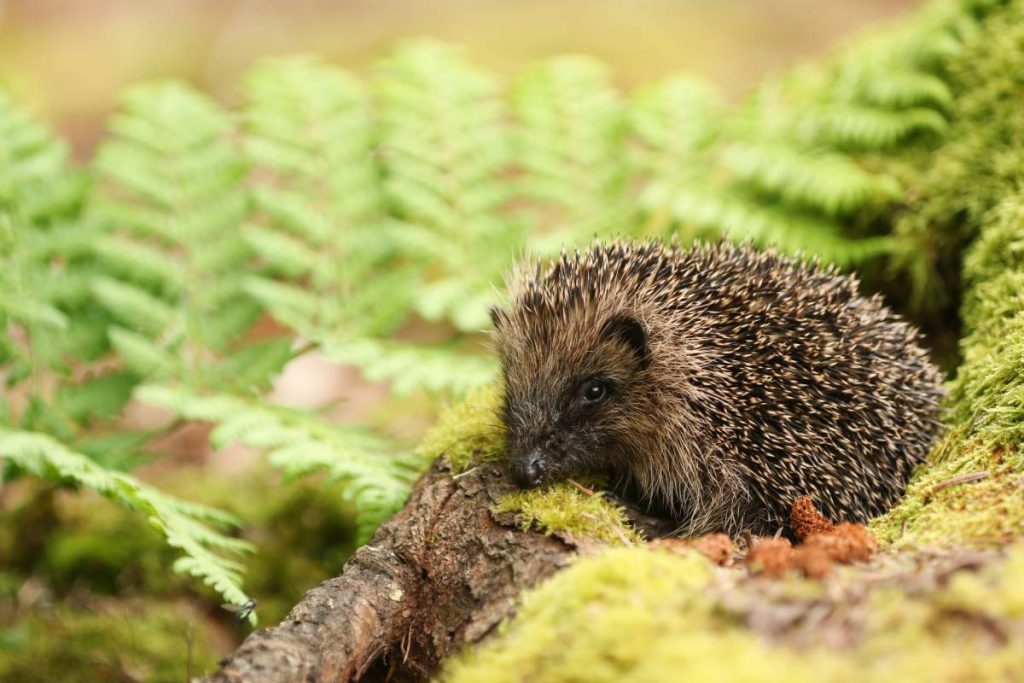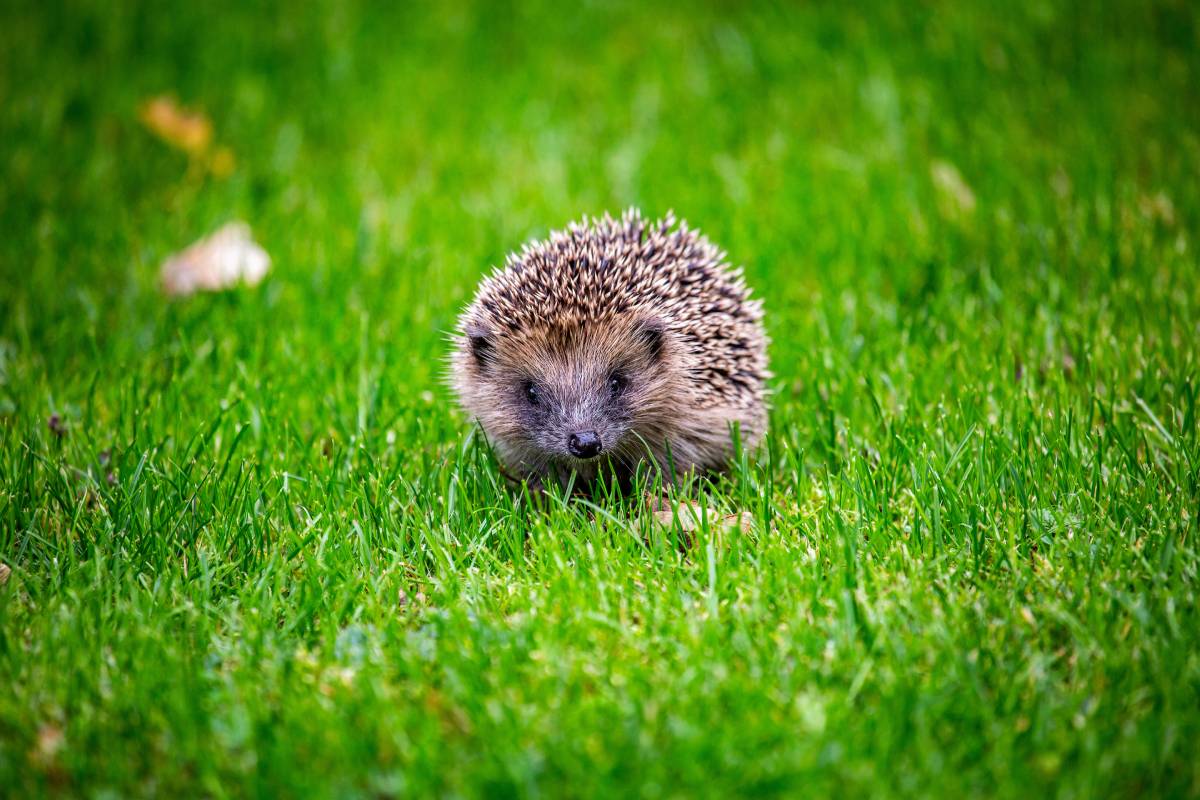Hedgehogs, with their tiny size and unique appearance, have captured the hearts of animal lovers everywhere. These adorable creatures, known for their distinctive quills and endearing faces, are becoming increasingly popular as pets. While hedgehogs have been known in the wild for centuries, their recent rise in popularity as domestic pets has brought them into the spotlight.
What is it about these little mammals that makes them so irresistibly cute? In this article, we’ll explore the charming world of hedgehogs, focusing on what makes them so appealing to pet owners and animal enthusiasts alike.
From their quirky behaviors to their lovable personalities, there’s no denying that hedgehogs have a special kind of cuteness that has people falling in love with them at first sight.
The Allure of Hedgehogs
Hedgehogs have a unique set of physical features that contribute to their undeniable cuteness. One of the most striking aspects of their appearance is their small size. Typically weighing between 1 to 2 pounds, hedgehogs fit perfectly in the palm of your hand, making them seem especially adorable and delicate. Their petite size makes them easy to handle and gives them a charming, almost toy-like appearance.
Another distinctive feature of hedgehogs is their quills. Unlike the spines of a porcupine, hedgehog quills are not sharp or barbed, but they still give these little creatures a spiky, playful look. When a hedgehog curls up into a ball—a natural defense mechanism—they resemble a tiny, prickly puffball, which many people find irresistibly cute.
Additionally, hedgehogs have expressive faces with bright, curious eyes and tiny, pointed noses that often twitch as they explore their surroundings. Their small ears and rounded cheeks give them a baby-like appearance, which taps into the human affection for “baby schema” — a set of features like large eyes, round faces, and small bodies that elicit feelings of caregiving and affection.
When compared to other small animals, such as hamsters, guinea pigs, or rabbits, hedgehogs have a unique appeal due to their combination of quirky physical traits and behaviors. While many small pets are soft and cuddly, the contrast between a hedgehog’s spiky exterior and its soft underbelly makes them uniquely endearing. Furthermore, their curious and sometimes shy behavior adds to their charm, making them a favorite among small pet enthusiasts.
Hedgehog Behavior and Personality

Hedgehogs are fascinating creatures with a variety of behaviors that add to their cuteness and charm. One of the most notable behaviors of a hedgehog is its tendency to curl up into a tight ball. This action is a natural defense mechanism that protects their soft underbelly by exposing only their quills to potential predators. For pet owners, watching a hedgehog curl up can be both adorable and amusing, as it transforms from a lively creature to a spiky ball in a matter of seconds.
Another endearing behavior is their foraging habit. In the wild, hedgehogs are nocturnal animals that spend their nights searching for food, such as insects and small invertebrates. As pets, they often exhibit similar behavior by exploring their enclosures and sniffing around for treats. This natural curiosity and their methodical way of exploring their environment can be quite entertaining for owners to observe.
Hedgehogs are also known for their quirky habit of “self-anointing.” When they encounter a new scent or taste, they may lick or bite the source, then produce a frothy saliva which they spread over their quills with their tongue. This behavior, while puzzling to many, is believed to be a way for hedgehogs to scent-mark themselves or possibly a method to camouflage their own scent in the wild.
In terms of personality, hedgehogs can vary greatly. Some hedgehogs are quite shy and prefer to stay hidden in their dens, only venturing out when they feel safe and secure. Others can be more outgoing and curious, eagerly exploring their surroundings and interacting with their owners. This range of personalities makes each hedgehog unique, and part of the joy of owning one is getting to know their individual quirks and preferences.
Stories and Anecdotes from Hedgehog Owners: Many hedgehog owners have delightful stories to share about their pets’ personalities and behaviors. For example, one owner recalls the first time their hedgehog, named Spike, tried to climb up a ramp in his enclosure. After several failed attempts, Spike finally made it to the top, only to slide back down on his belly, much to the amusement of his owner.
Another owner describes how their hedgehog, Hazel, would always curl up into a ball whenever someone new entered the room, but with time and patience, Hazel became more comfortable and began to show her playful side, chasing a small ball around her enclosure.
These stories highlight the unique charm of hedgehogs and the joy they bring to their owners. Whether they are shy or curious, each hedgehog has a personality that shines through, making them endearing companions for those who take the time to understand and appreciate them.
The Science Behind Cuteness
The cuteness of hedgehogs can be explained through a combination of psychological and evolutionary factors. One of the key reasons we find hedgehogs cute is their alignment with the concept of “baby schema.”
This term, coined by ethologist Konrad Lorenz, describes a set of physical features—such as a large head relative to body size, big eyes, chubby cheeks, and a small nose—that are typically associated with human infants. These features instinctively trigger caregiving and nurturing responses in adults, which is why creatures that possess these characteristics, including hedgehogs, are often perceived as cute.
From an evolutionary perspective, humans are predisposed to find certain traits adorable as part of a survival mechanism. The instinct to protect and care for beings that exhibit baby schema ensures the survival of our offspring. This instinct can extend to animals that exhibit similar features, which is why hedgehogs, with their small size, round bodies, and expressive faces, tap into our innate caregiving impulses.
Additionally, the appeal of hedgehogs may be linked to their perceived vulnerability and harmlessness. Hedgehogs are small, non-threatening creatures that elicit a sense of empathy and a desire to protect.
Their behaviors, such as curling up into a ball when frightened, reinforce this perception, making them seem even more endearing and in need of care. This combination of physical traits and behaviors that align with our protective instincts plays a significant role in why we find hedgehogs so cute.
Hedgehogs in Popular Culture
Hedgehogs have made their mark in popular culture, contributing to their image as cute and beloved animals. One of the most famous hedgehogs is Sonic the Hedgehog, a video game character created by Sega in the early 1990s.
Sonic’s speedy adventures, blue fur, and spiky hairstyle have made him an iconic figure in gaming culture, appealing to both children and adults. While Sonic is far from a realistic portrayal of an actual hedgehog, his character has undoubtedly increased awareness and interest in the species.
In addition to video games, hedgehogs have become popular on social media platforms like Instagram and TikTok. Videos of hedgehogs doing cute things—such as eating, playing, or simply exploring—often go viral, racking up thousands of likes and shares. These social media trends have helped to amplify the cuteness factor of hedgehogs, turning them into internet celebrities and driving a surge in their popularity as pets.
The portrayal of hedgehogs in popular culture often emphasizes their endearing qualities, whether it’s their physical appearance, quirky behaviors, or unique personalities. By showcasing hedgehogs in a positive and adorable light, these portrayals reinforce the perception of hedgehogs as cute and lovable animals.
As a result, people are more likely to view hedgehogs favorably, further solidifying their place in the realm of cute and cherished pets.
Caring for Hedgehogs: What You Need to Know
Caring for hedgehogs requires understanding their specific needs to ensure they lead healthy and happy lives. Here are the basic care requirements:
- Diet: Hedgehogs are insectivores, meaning their diet mainly consists of insects. However, as pets, they can be fed a high-quality, protein-rich commercial hedgehog food, supplemented with small amounts of fruits, vegetables, and insects like mealworms or crickets. It’s essential to avoid foods high in fat and sugar, as well as toxic foods like chocolate, grapes, and onions.
- Habitat: A suitable enclosure is vital for a hedgehog’s well-being. The cage should be spacious, well-ventilated, and lined with soft bedding. Hedgehogs are nocturnal and require a dark, quiet area to sleep during the day. They also need an exercise wheel to maintain physical health and prevent obesity. The cage should have hiding spots, like small houses or tunnels, to provide a sense of security and comfort.
- Health: Regular veterinary check-ups are important to monitor a hedgehog’s health. Hedgehogs can suffer from common health issues like obesity, dental problems, mites, and respiratory infections. Observing their behavior and maintaining a clean environment can help prevent many health problems.
Tips for Creating a Cute and Comfortable Environment for Hedgehogs:
- Provide a variety of toys and enrichment activities to stimulate their curiosity and prevent boredom.
- Keep the cage clean and fresh to prevent odors and maintain a healthy environment.
- Ensure the temperature of the habitat is stable, between 72-80°F (22-27°C), to avoid hibernation or overheating.
Hedgehogs as Pets: Pros and Cons
Benefits of Having a Hedgehog as a Pet:
- Low Maintenance: Compared to some other pets, hedgehogs require less maintenance. They do not need frequent grooming, and their cages can be cleaned weekly.
- Quiet and Small: Hedgehogs are quiet animals and do not take up much space, making them ideal for small living spaces.
- Unique Companions: With their distinctive appearance and charming behaviors, hedgehogs make for fascinating and unique pets. They are interesting to watch and can form bonds with their owners over time.
Potential Challenges and Considerations:
- Nocturnal Nature: Hedgehogs are most active at night, which may not align with the schedules of some pet owners. They may not be the best fit for someone who wants a pet active during the day.
- Handling Sensitivity: Hedgehogs can be shy and require gentle handling and patience to become accustomed to human interaction. They may not be as immediately affectionate or interactive as some other pets.
- Specialized Care: Hedgehogs have specific dietary and environmental needs that must be met. Potential owners should be prepared to provide a proper diet, habitat, and healthcare.
Conclusion
Hedgehogs are charming and unique creatures that bring joy and fascination to their owners. Their cute physical features, quirky behaviors, and distinct personalities make them delightful pets for those who are prepared to meet their specific needs. Whether you are captivated by their tiny size, adorable expressions, or playful antics, there is no denying that hedgehogs have a special place in the hearts of animal lovers.
If you are considering adding a hedgehog to your family, take the time to learn more about their care requirements and ensure you are ready to provide a loving home. Hedgehogs can make wonderful companions for those who appreciate their unique charms and are willing to invest the time and effort into understanding their needs.
We’d love to hear from you! Share your own hedgehog stories or photos in the comments below and connect with other hedgehog enthusiasts. If you’re interested in learning more about hedgehogs or considering adoption, check out the resources we’ve provided to get started on your journey with these adorable little creatures.





















